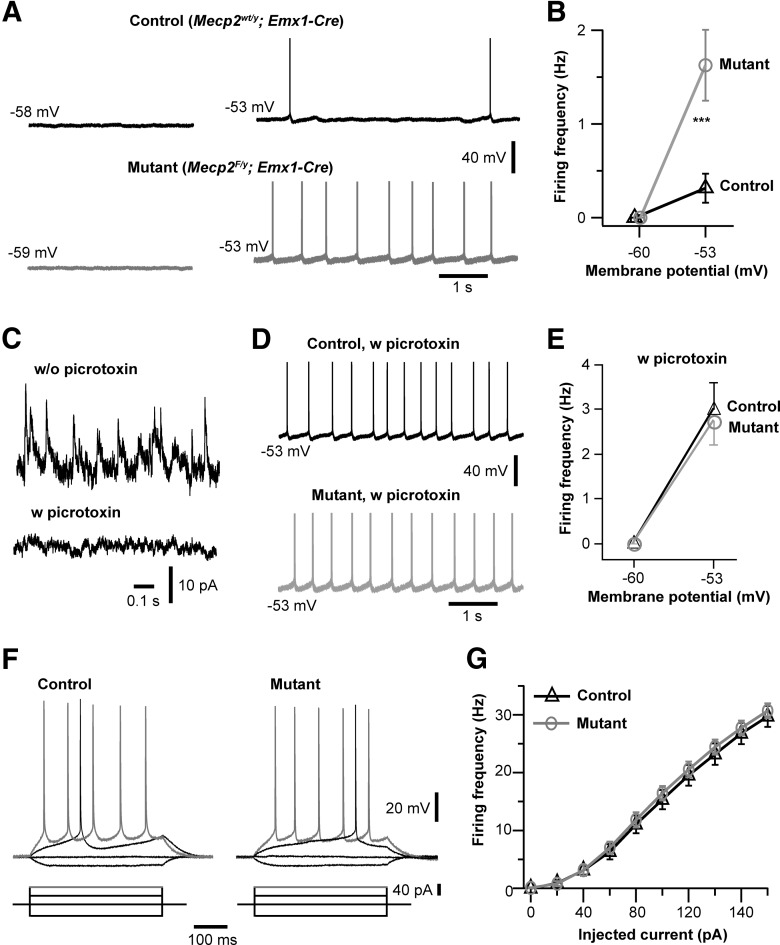Figure 8.
Hyperexcitation of cortical neurons in Emx1-Mecp2 mutant mice. A, Neuronal activity at the resting potential (−58, −59 mV) and at −53 mV in a control (Mecp2wt/y; Emx1-Cre) and mutant (Mecp2F/y; Emx1-Cre) neurons. B, Frequency of action potential of control and mutant neurons at the resting potential and at −53 mV. The mean firing frequency at −53 mV was 0.3 ± 0.2 Hz for control (n = 21 from 3 mice), and 1.6 ± 0.4 Hz for mutant (n = 26 from 3 mice; ***p < 0.001). C, Spontaneous IPSCs recorded from wild-type neurons without and with picrotoxin (0.5 mm) in the patch pipette. These recordings were obtained at 0 mV with the pipette solution containing Cs-methylsulfate ([Cl-]i of 35 mm). D, Firing recorded from a control and mutant neurons at −53 mV with picrotoxin in the patch pipettes. E, Firing frequency of control and mutant neurons at −60 and −53 mV with intracellular picrotoxin. The mean firing frequency at −53 mV was 3.0 ± 0.6 Hz for control (n = 24 from 3 mice), and 2.7 ± 0.5 Hz for mutant (n = 23 from 3 mice; p = 0.86). F, Membrane potential changes in response to current steps in control and mutant neurons. Synaptic transmission was blocked by bath perfusion of DNQX, kynurenic acid, and picrotoxin. G, Plot of spike frequency versus injected current for control (n = 27 from 3 mice) and mutant neurons (n = 31 from 3 mice).

